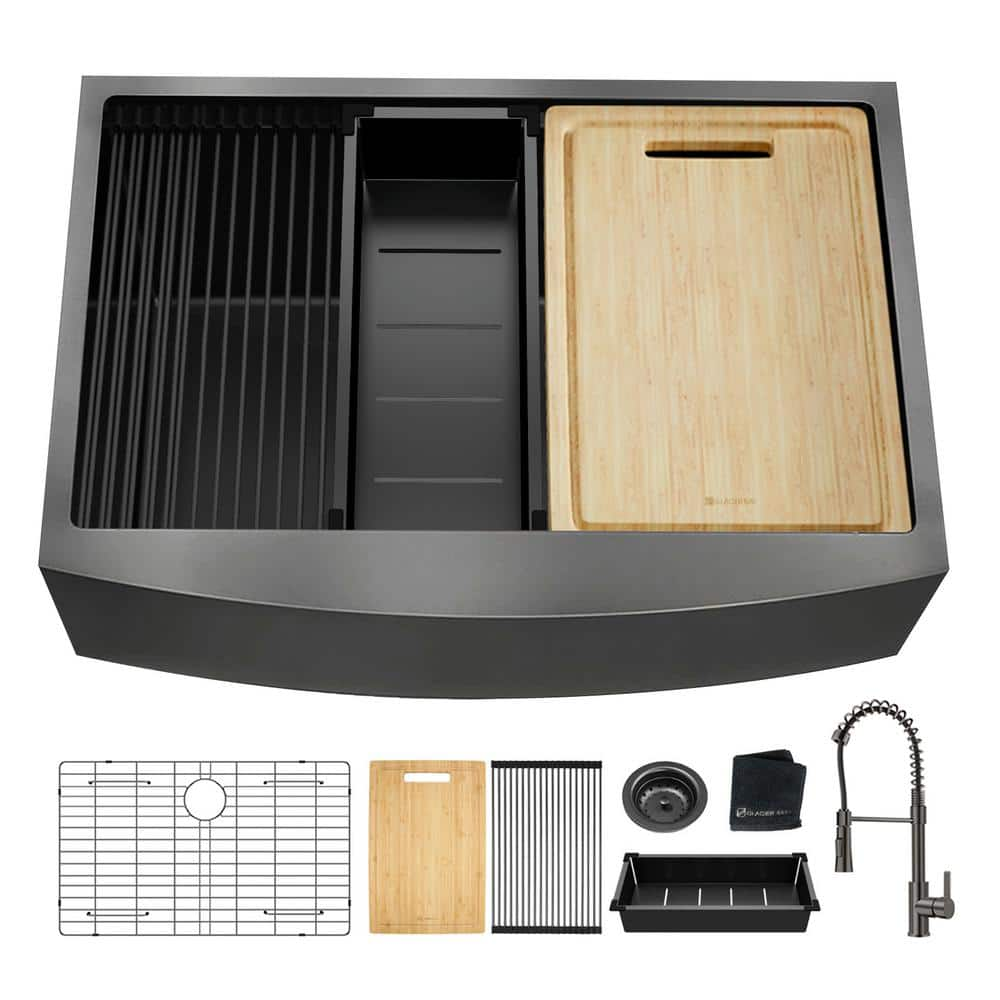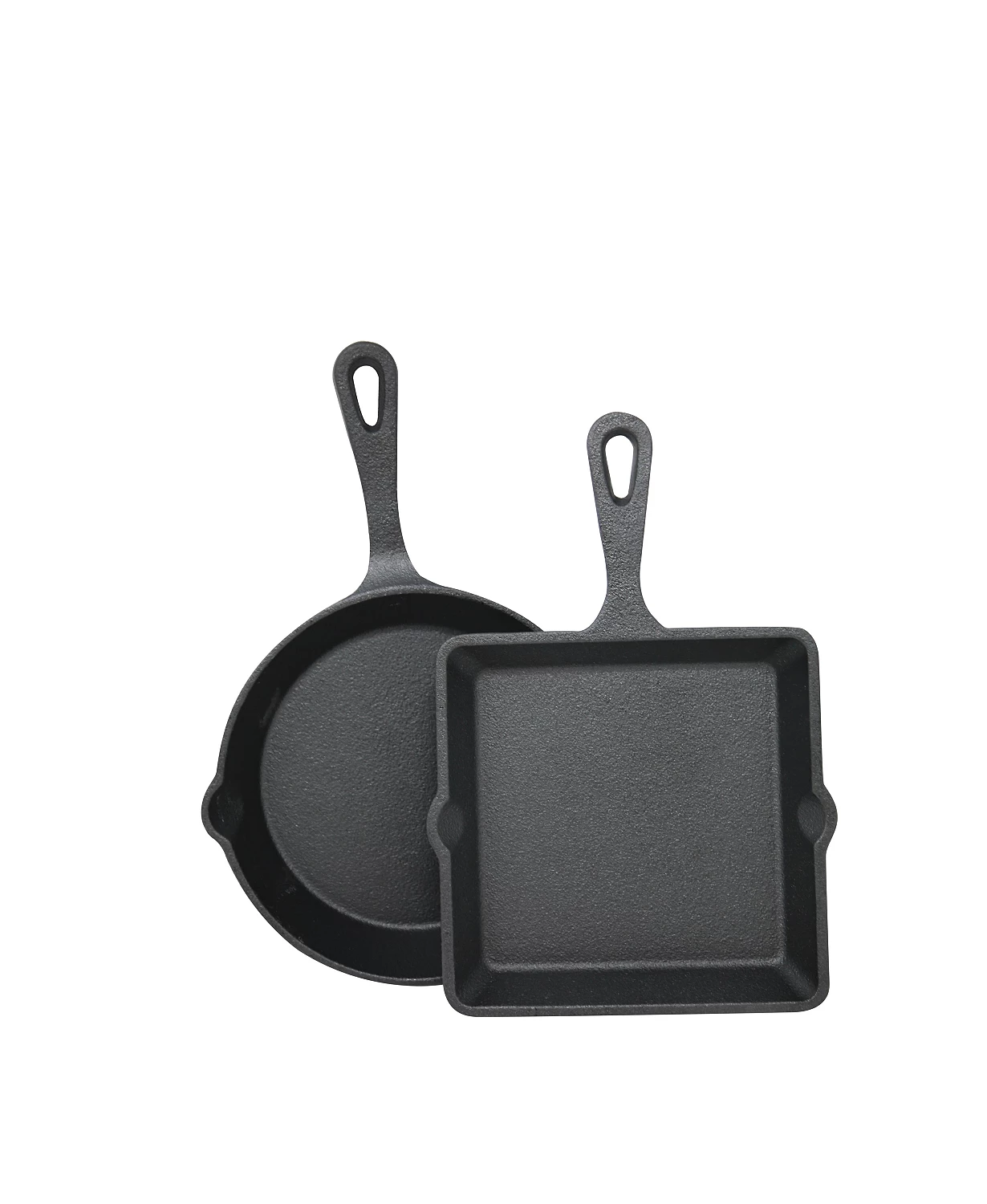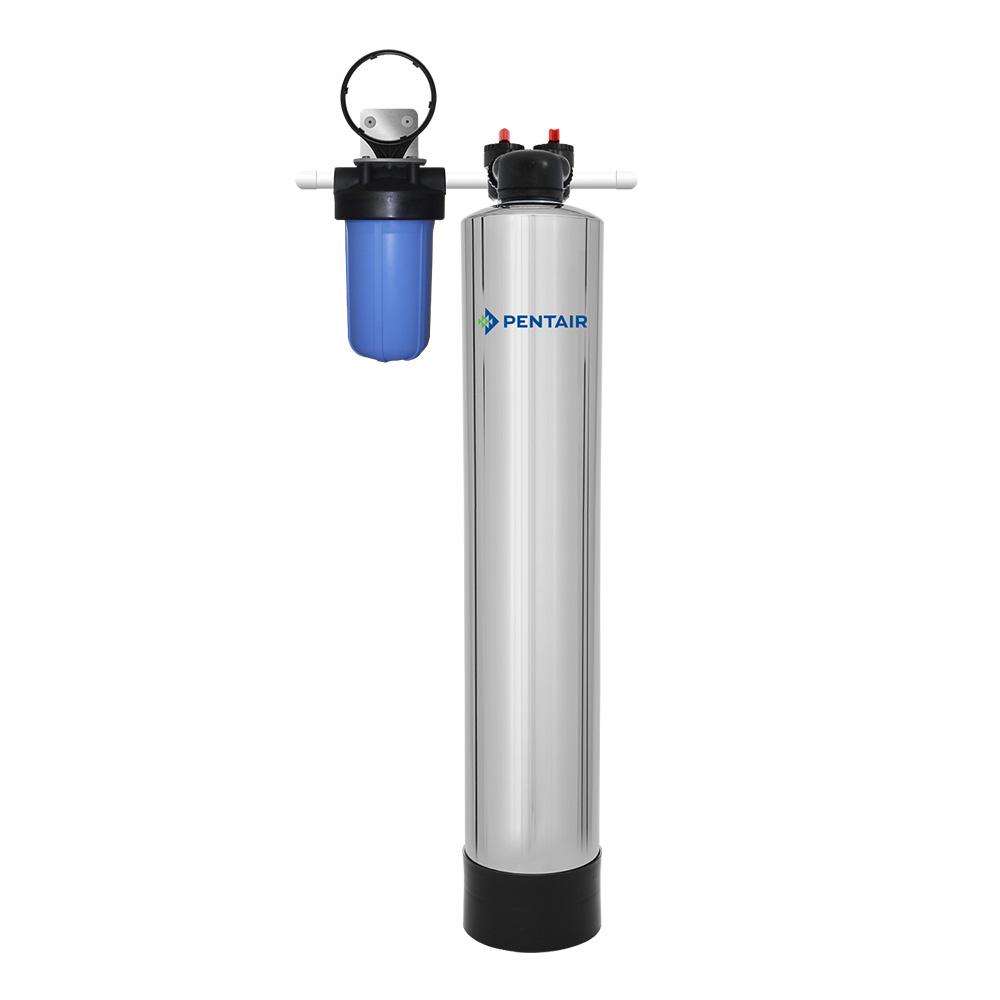Glacier Bay Black Stainless Steel 33 in. 18-Gauge Single Bowl Farmhouse Workstation Kitchen Sink with Spring Neck Faucet
No longer must you forgo style for durability! Experience new technology in the kitchen with this Glacier Bay Black Stainless Steel 18-Gauge Kitchen Sink. This sink is manufactured with innovative PVD and Nano technology, creating a durable and lasting coating over lasting stainless steel material. The gunmetal black kitchen sink compliments any decor and is highly functional.
No longer must you forgo style for durability! Experience new technology in the kitchen with this Glacier Bay Black Stainless Steel 18-Gauge Kitchen Sink. This sink is manufactured with innovative PVD and Nano technology, creating a durable and lasting coating over lasting stainless steel material. The gunmetal black kitchen sink compliments any decor and is highly functional. Handcrafted with premium 304 series stainless steel, fully undercoated with multi-layer sound-eliminating pad, which also prevents condensation. Commercial grade premium scratch-resistant PVD nano finish. All kitchen sinks guaranteed to never rust. Elegant and functional solid metal strainer included.
- Beautiful Gunmetal Black finish over durable 18-Gauge Stainless Steel. Nano technology is applied on the surface, which ensures lasting color while creating a water repellant surface for better draining, increasing surface hardness and scratch resistance.
- Farmhouse/Apron-Front sink installation. Minimum cabinet cut out size 36 in.
- Single Bowl kitchen sink.
- Included in Sink purchase: Faucet, Bottom Grids, Drain and Mounting Hardware
- Excellent handcraft: It is handmade above mount worksation kitchen sink, not like pressed sinks which made of machine. All the kitchen sinks are made by the carftmans who have more than 10 years experience in this industry.
- Heavey duty: This gunmetal black undermount worksation kitchen sink is constructed with premium 304 stainless steel, which is highly resistant to corrosion and dents.
- Large Capacity: Our gunmetal black undermount workstation kitchen sink is designed to hold large items like stockpots and baking sheets, which brings you great convenience in daily use.
- Quiet Sink: Extra thick sound guard undercoating to minimize noise and reduce condensation of this kitchen sink, protects the cabinet from damp, mildew and deformation.
- Bounus accessories: Buy one get eight, included Kitchen Sink, Faucet, Bottom Grid, Strainer Drain, Bamboo Cutting Board, Deep Stainless Steel Colander, Roll-up Rack, Towel
Additional information
| Actual Left to Right Length (In.) | 33 |
|---|---|
| Bowl Below Counter Depth (in.) | 10 |
| Bowl Front to Back Width (in.) | 22 |
| Bowl Left to Right Length (in.) | 33 |
| Bowl Top to Bottom Depth (in.) | 10 |
| Cut-Out Below Counter Depth (in.) | 10 |
| Kitchen Sink Front to Back Width (In.) | 22 |
| Panel Height (in.) | 10 |
| Panel Width (in.) | 33 |
| Spout Height (in.) | 6.5 |
| Certifications and Listings | IAPMO Certified,IAPMO Certified |
| Manufacturer Warranty | 5 years |






by Chris
Great value and fast delivery!
by Steve
If I could give this a 10 I would. This workstation sink is beyond our expectations. so much that we plan to install in our primary home too.
by Torena
It is not as dark as it is in the picture. I was sent a regular stainless steel colored one at first and had to send it back. I haven’t installed it yet. It is pretty but not very Black. It is just a dark grey. I will update after I install and use it.
by Eddie
This single bowl farmhouse apron sink looks luxurious, comes with everything you need and it all coordinates with the black stainless steel colors. Easy to assemble as you follow the under mount installation user and care guide instructions. I’m in the middle of renovating our kitchen and can’t wait to have this modern style apron front kitchen sink installed. A large rectangle size deep sink, mounting hardware, beautiful matching spring neck pull out kitchen faucet, strainer, drain, bottom grid, roll mat, colander, wood cutting board and towel is included in this bundle. The faucet comes with the hot and cold supply lines and quick connector outlet hose, weight and mounting hardware and will need to be installed onto a countertop. The indented insert sink area allows the cutting board, colander and roll mat to fit perfectly. This is our first black stainless steel sink and we love the apron front farmhouse style and finish. This is a commercial grade scratch resistant physical vapor deposition (PVD) nano finish for long lasting durability. This is wonderful for our well used kitchen area.